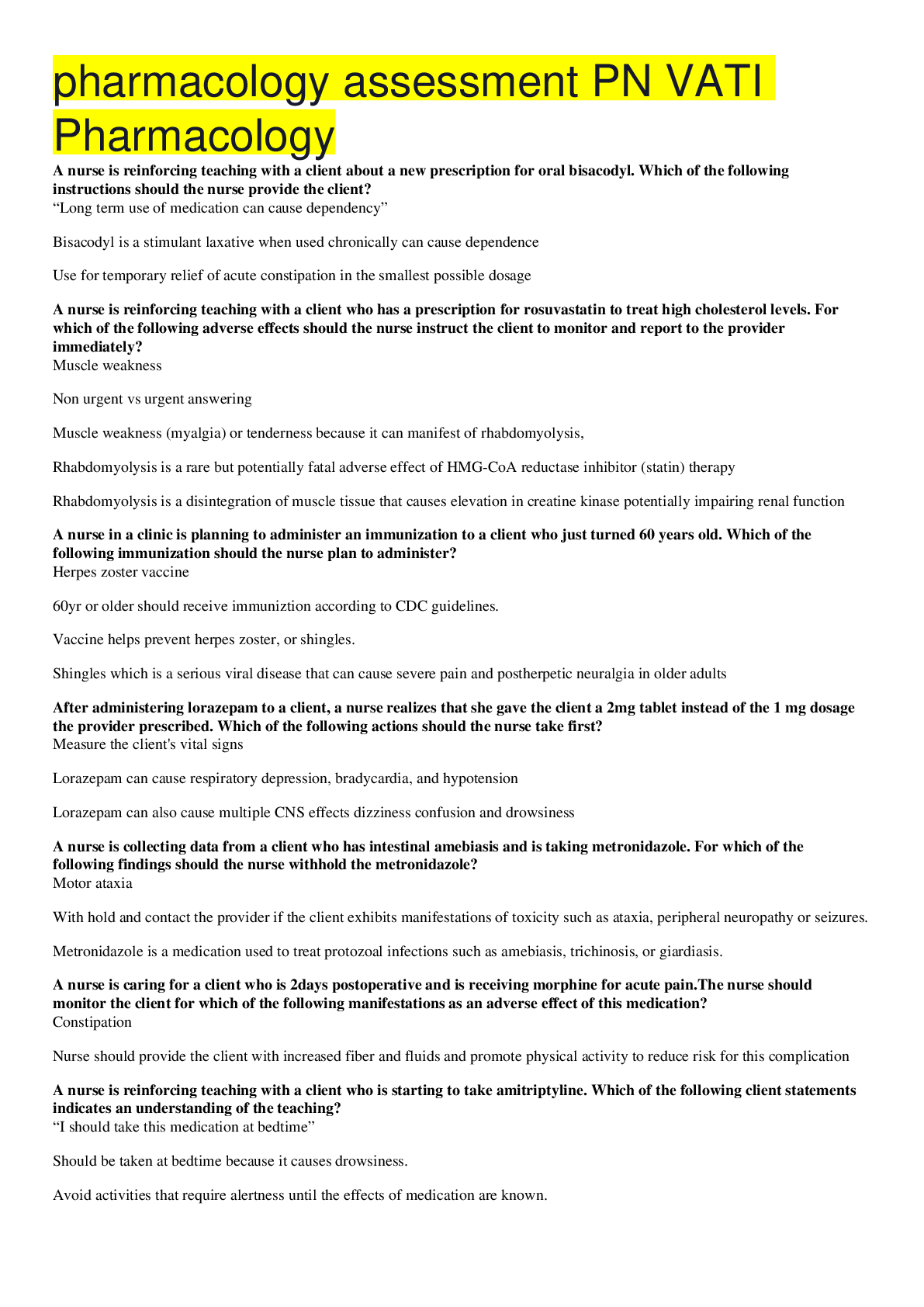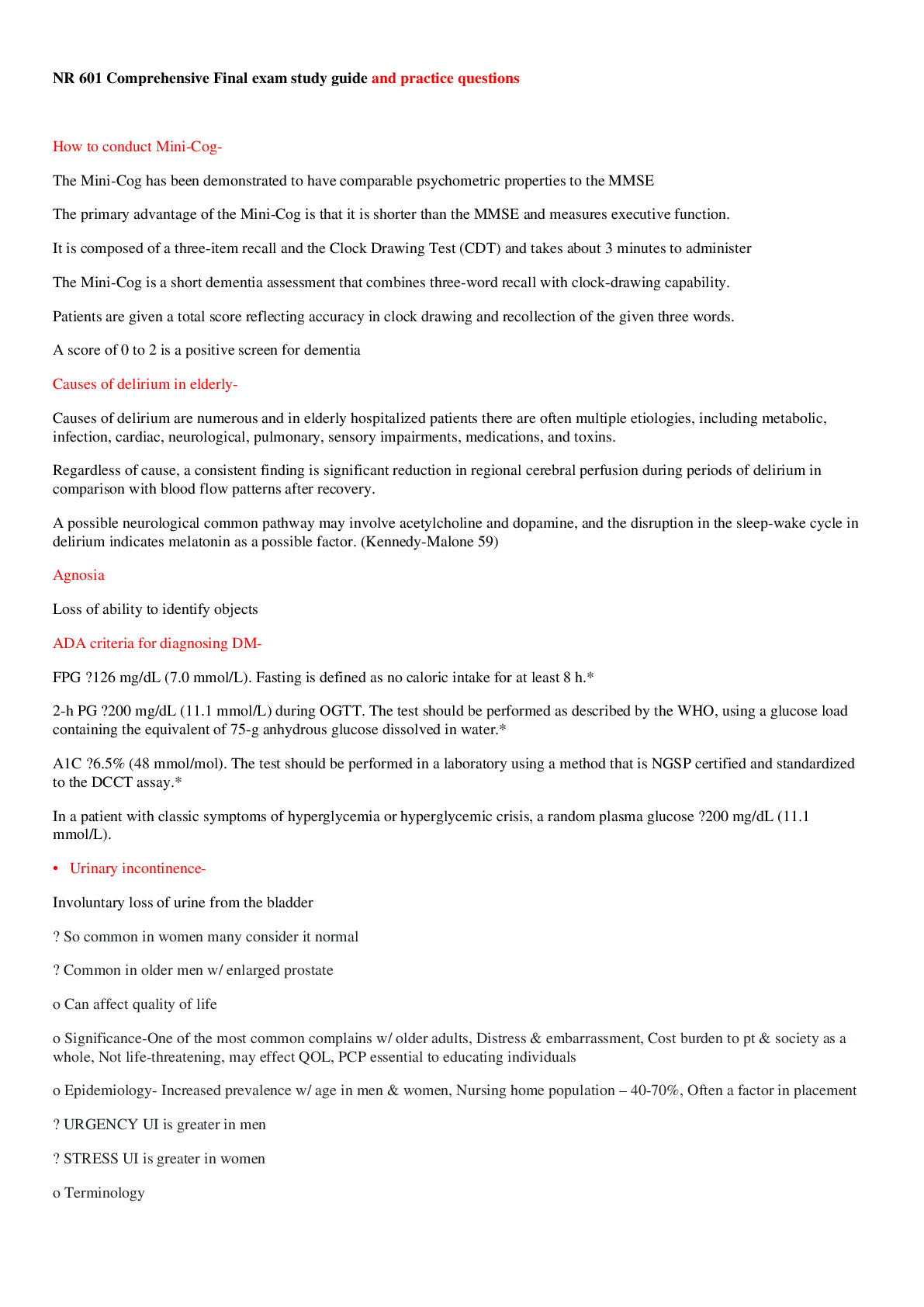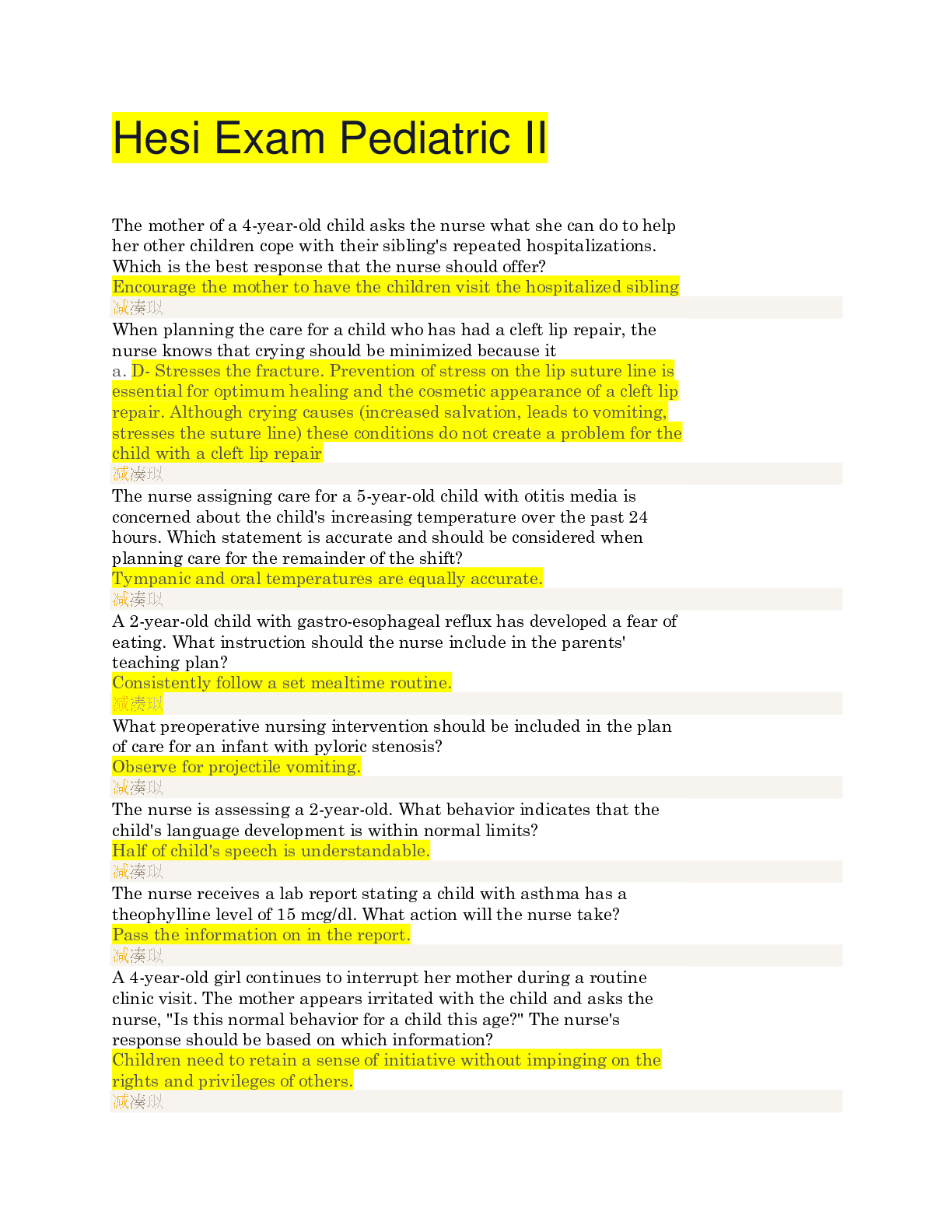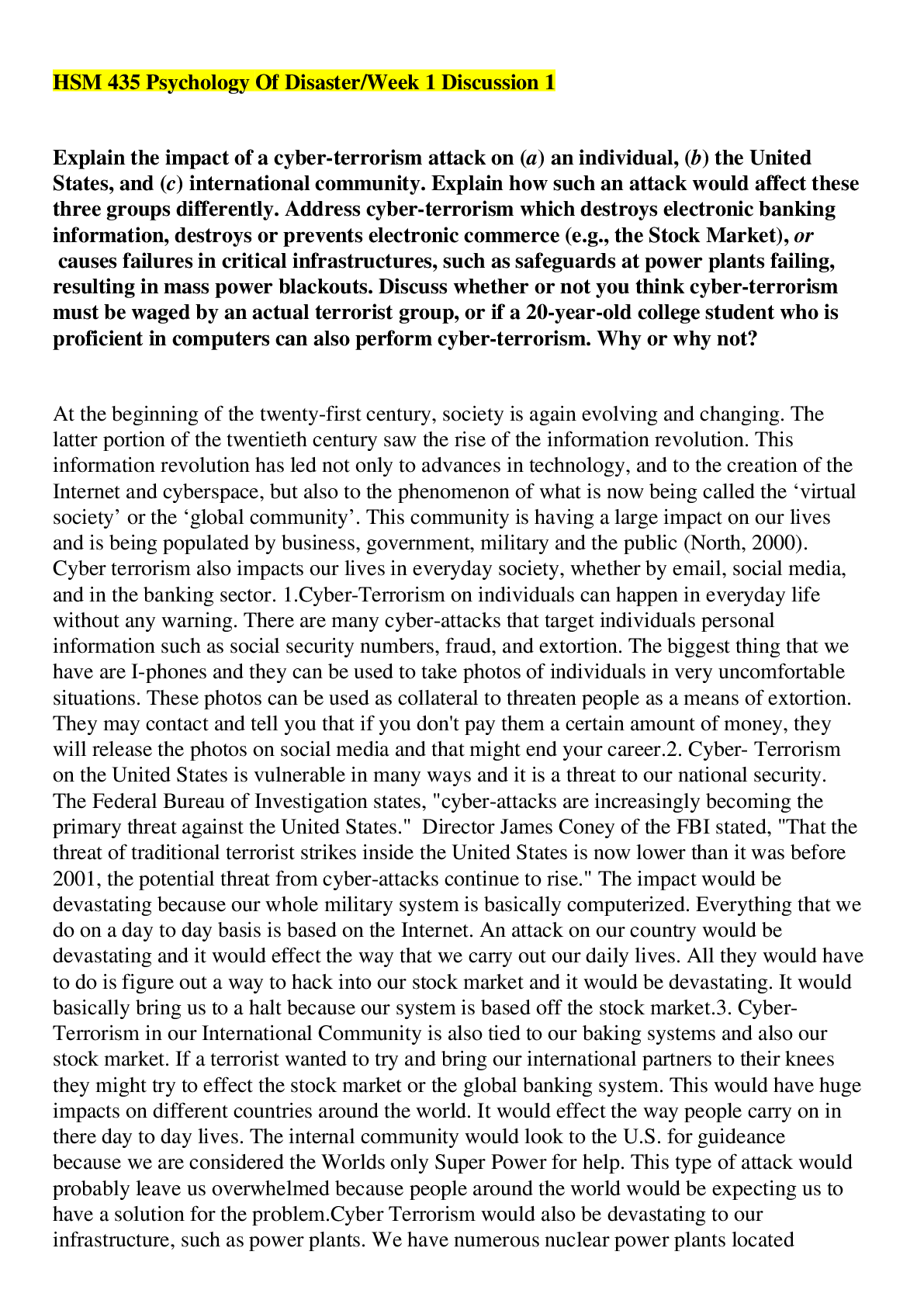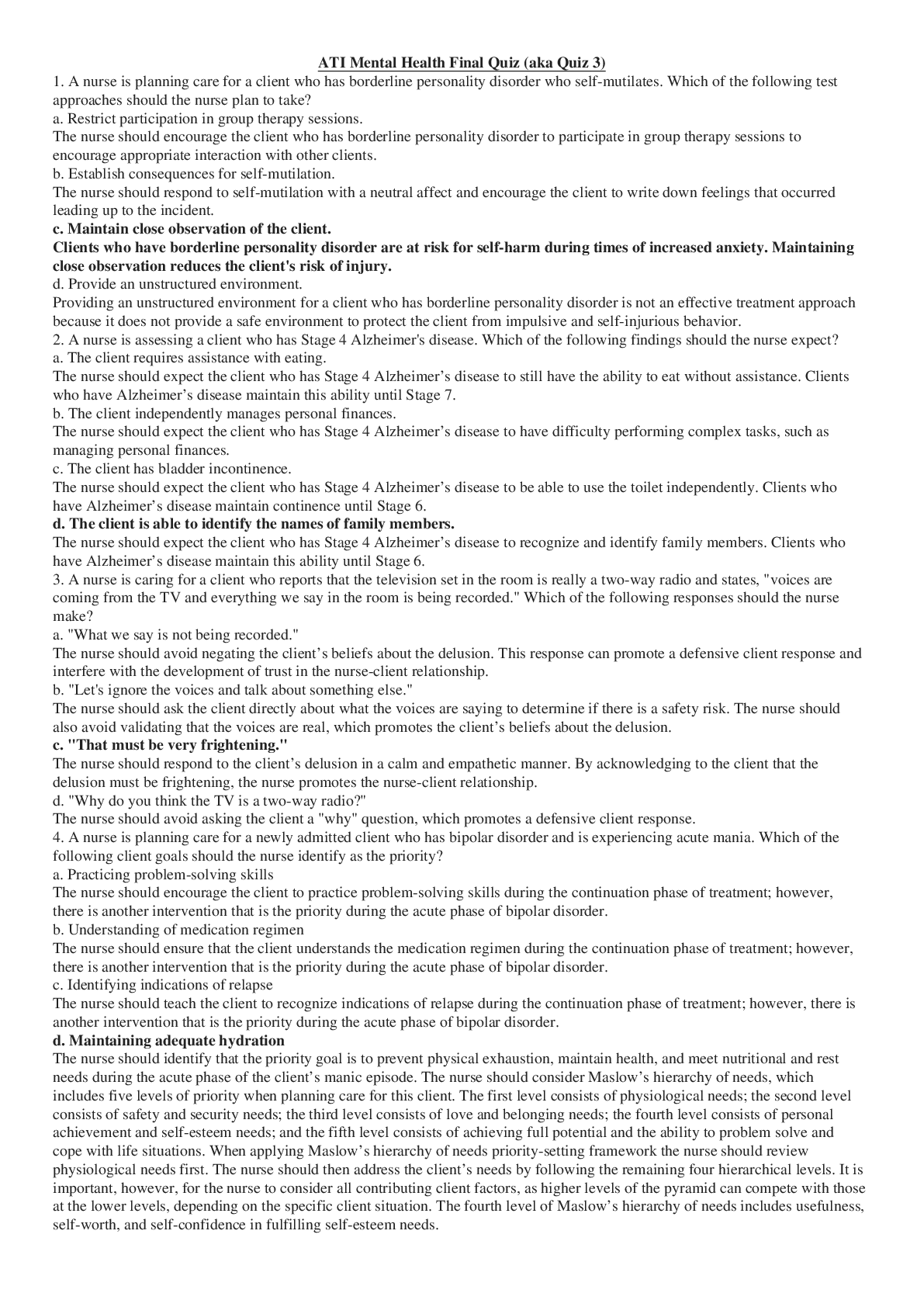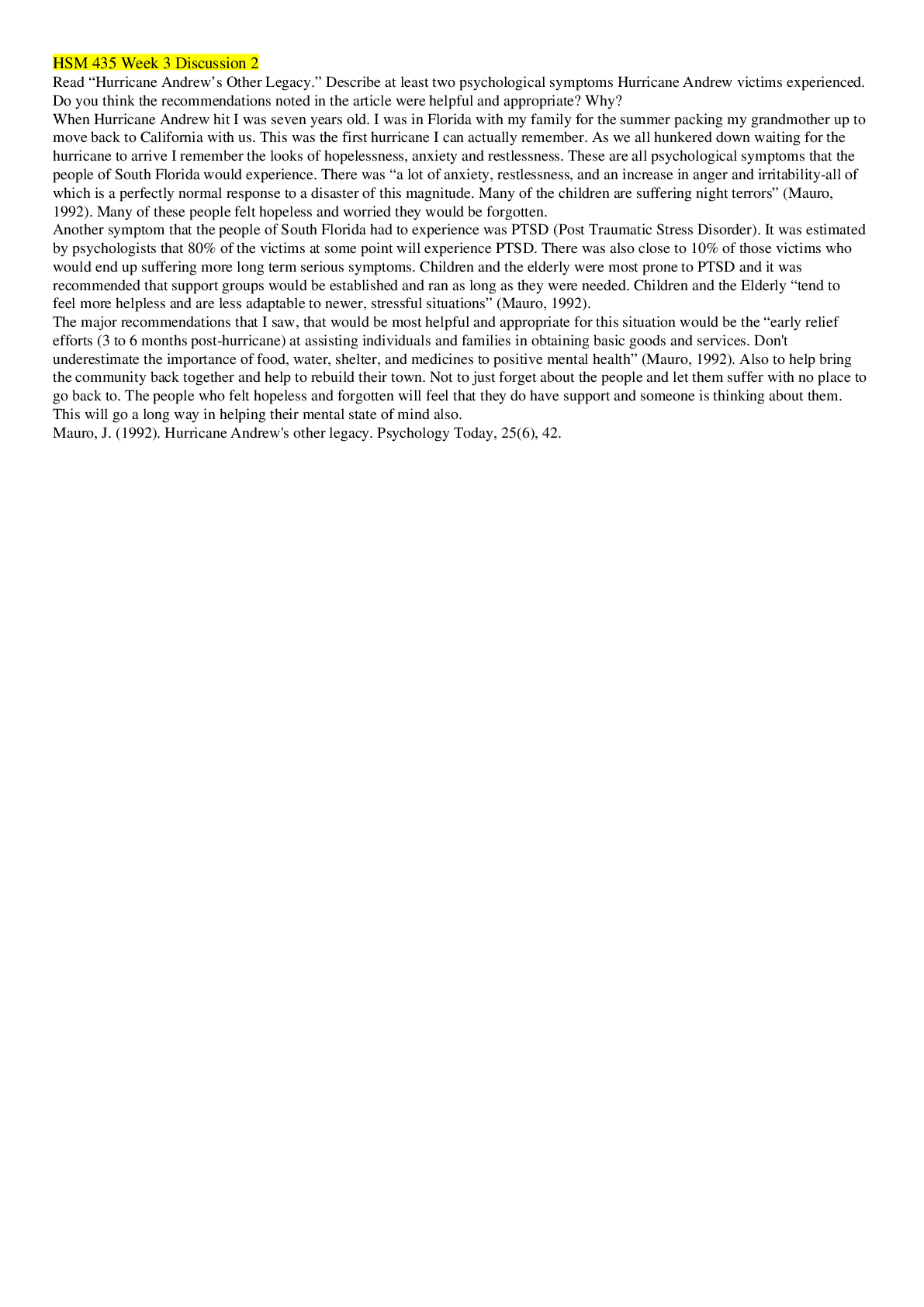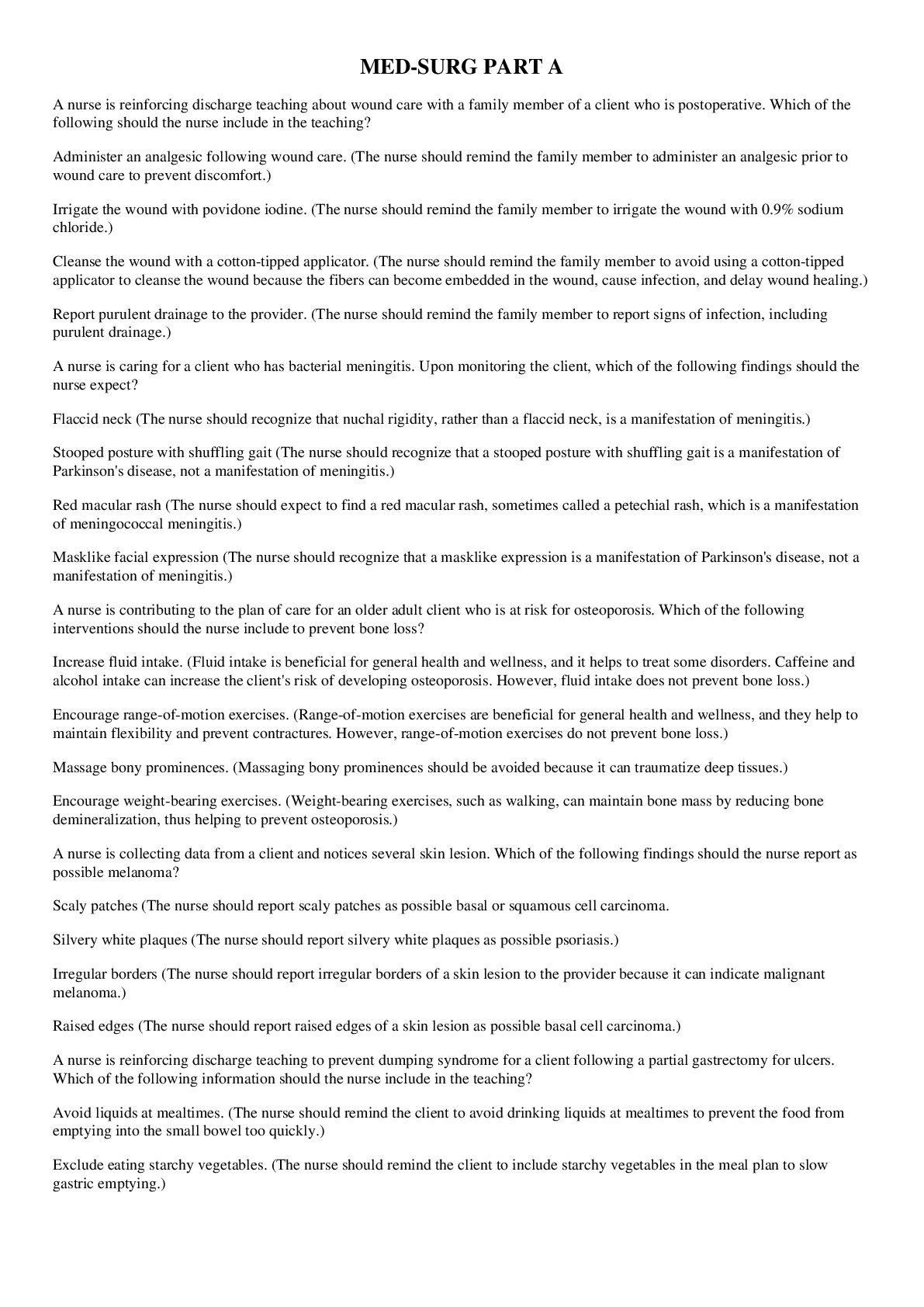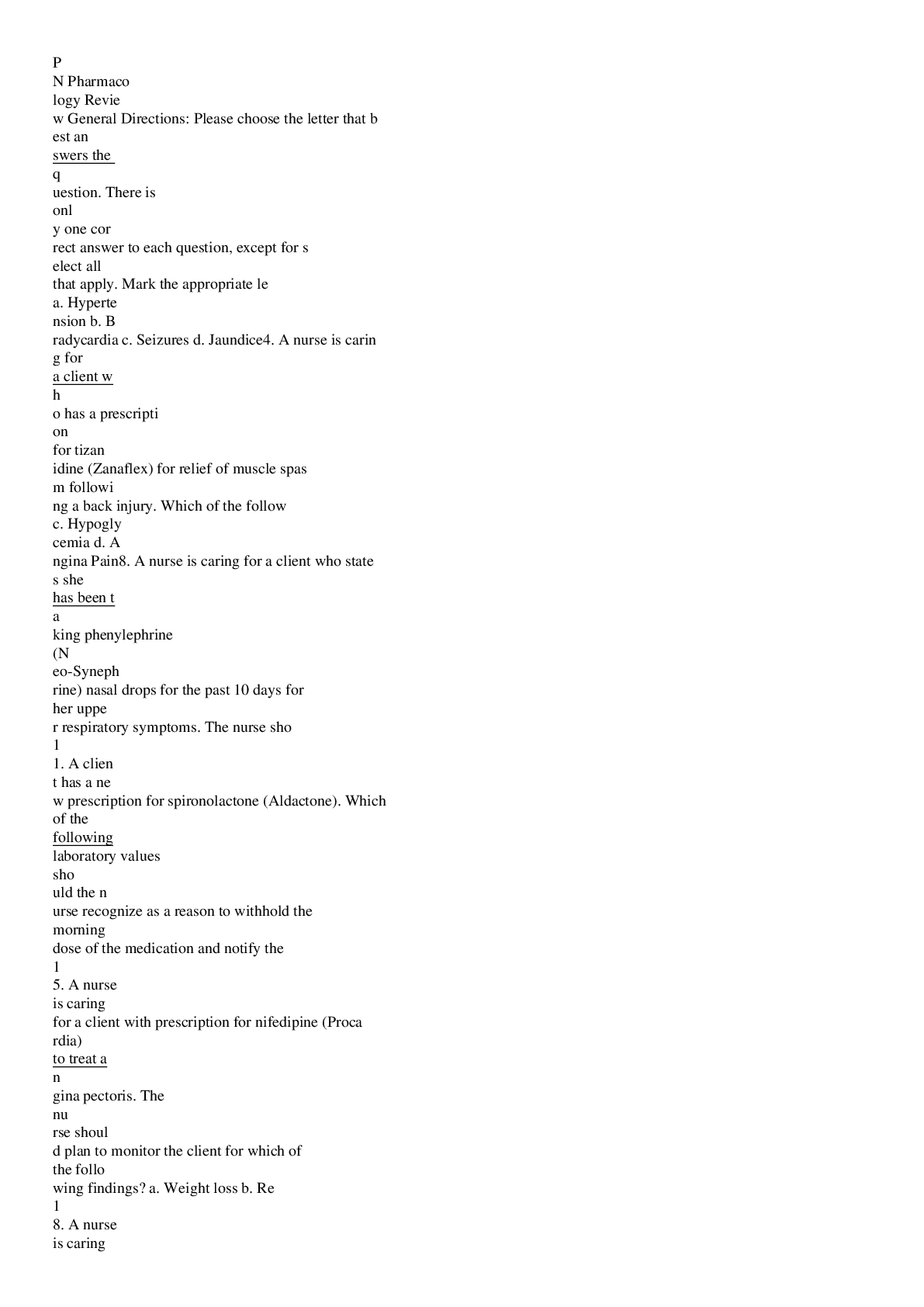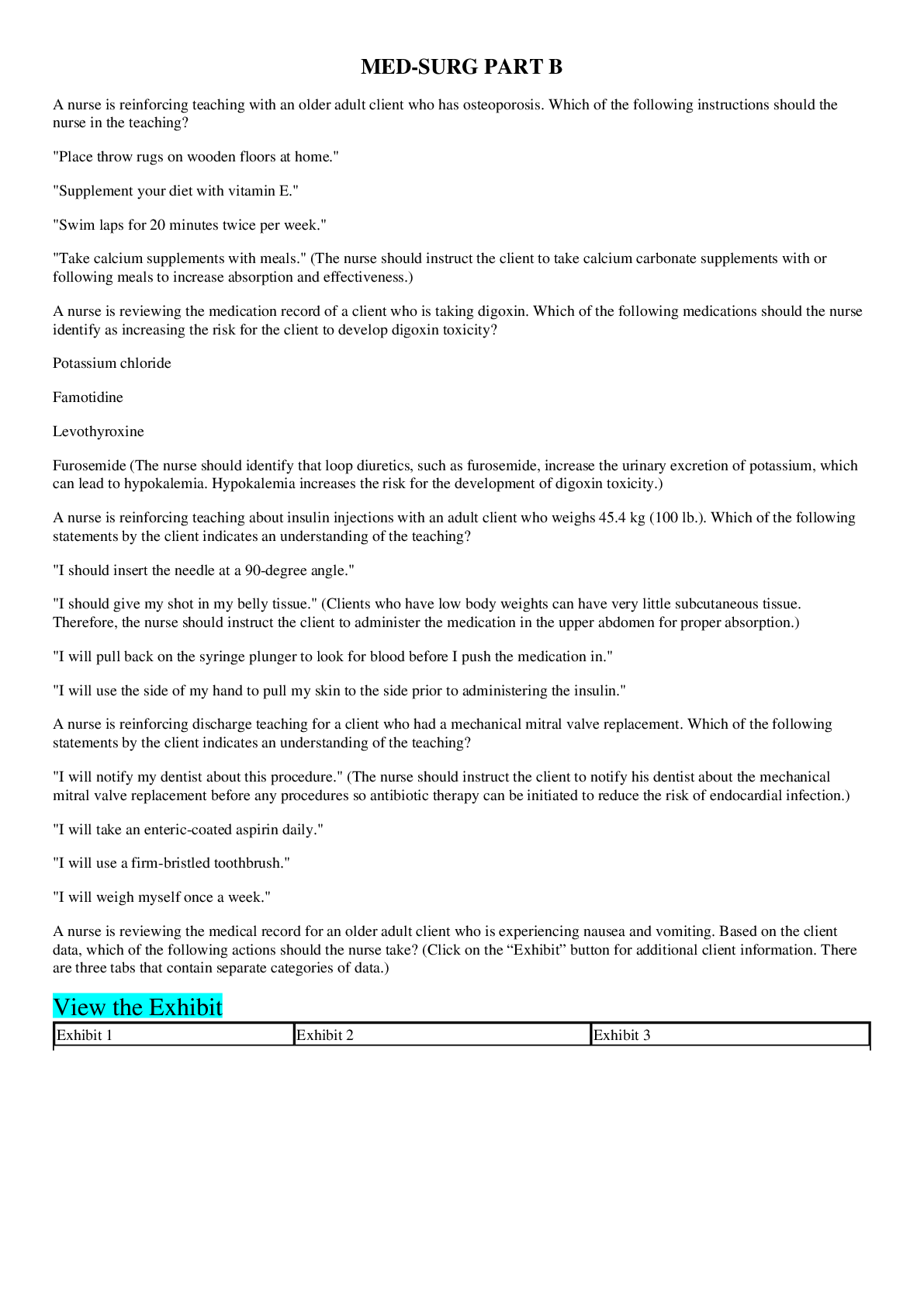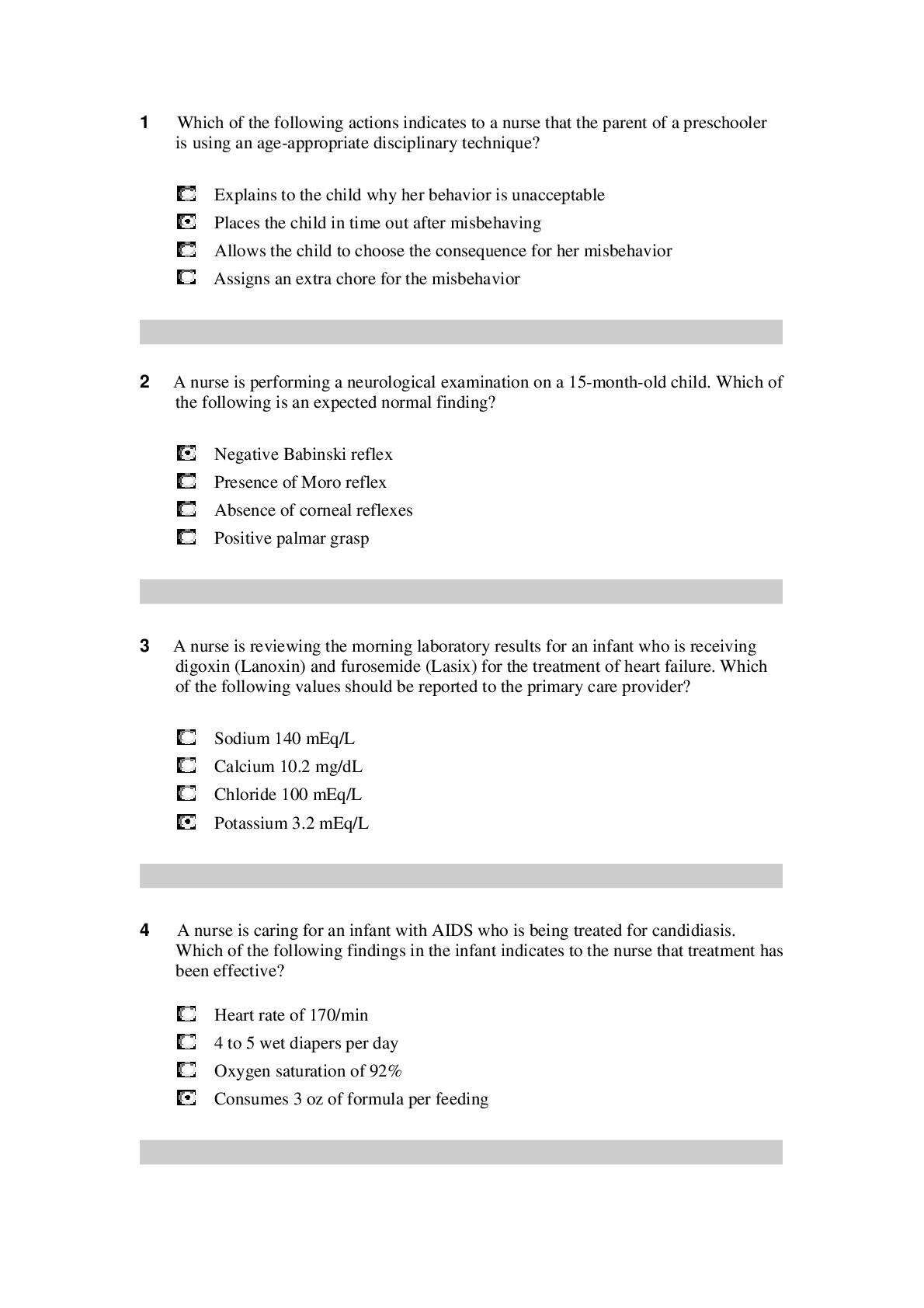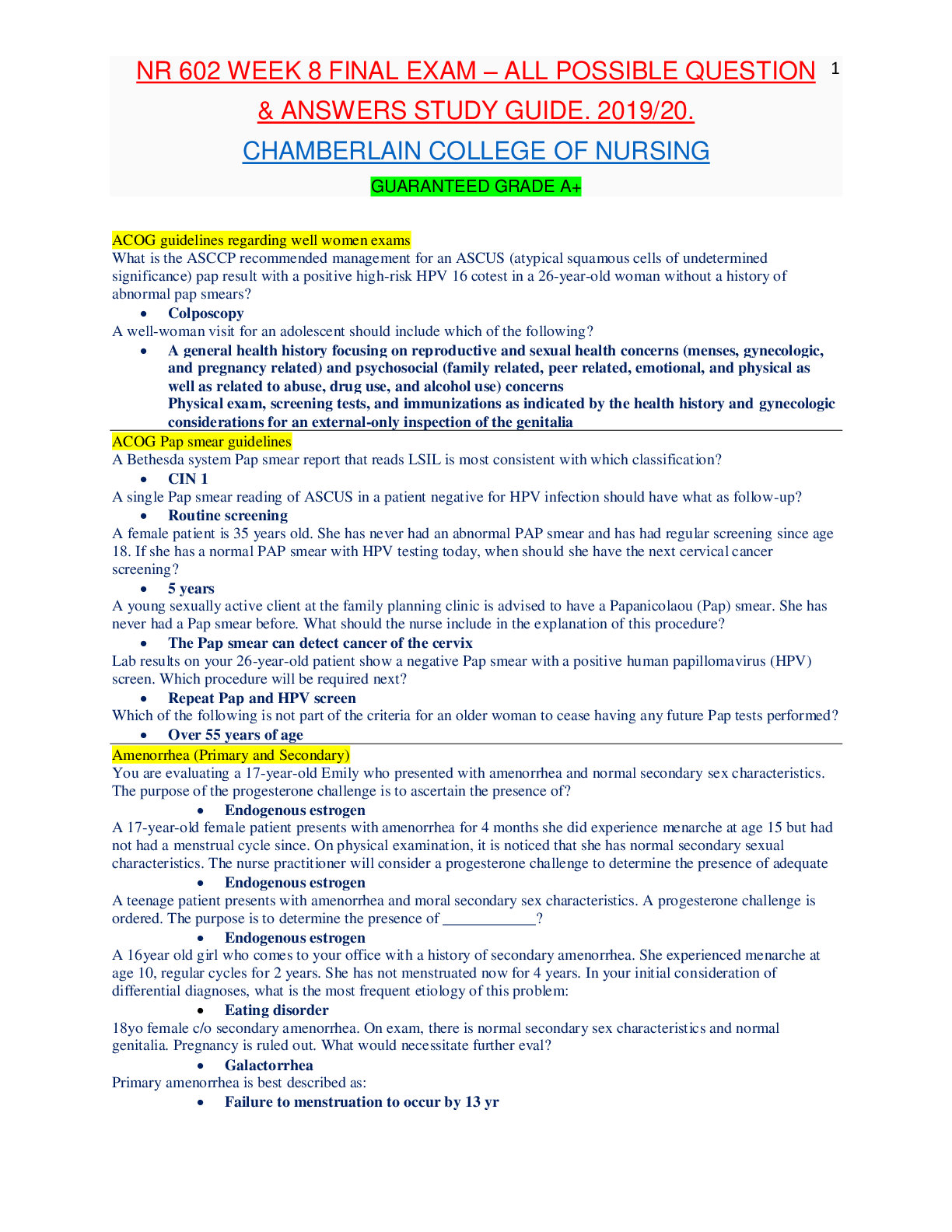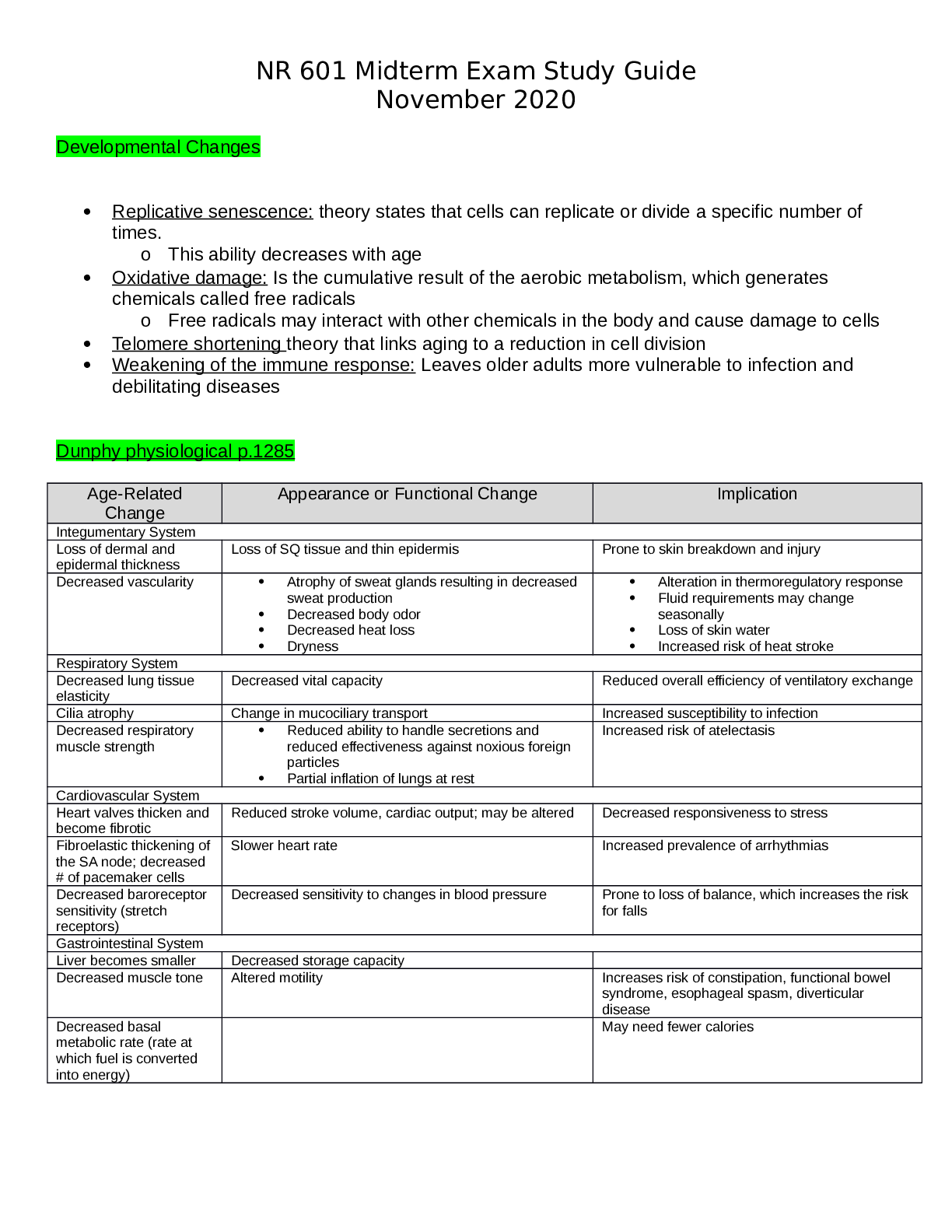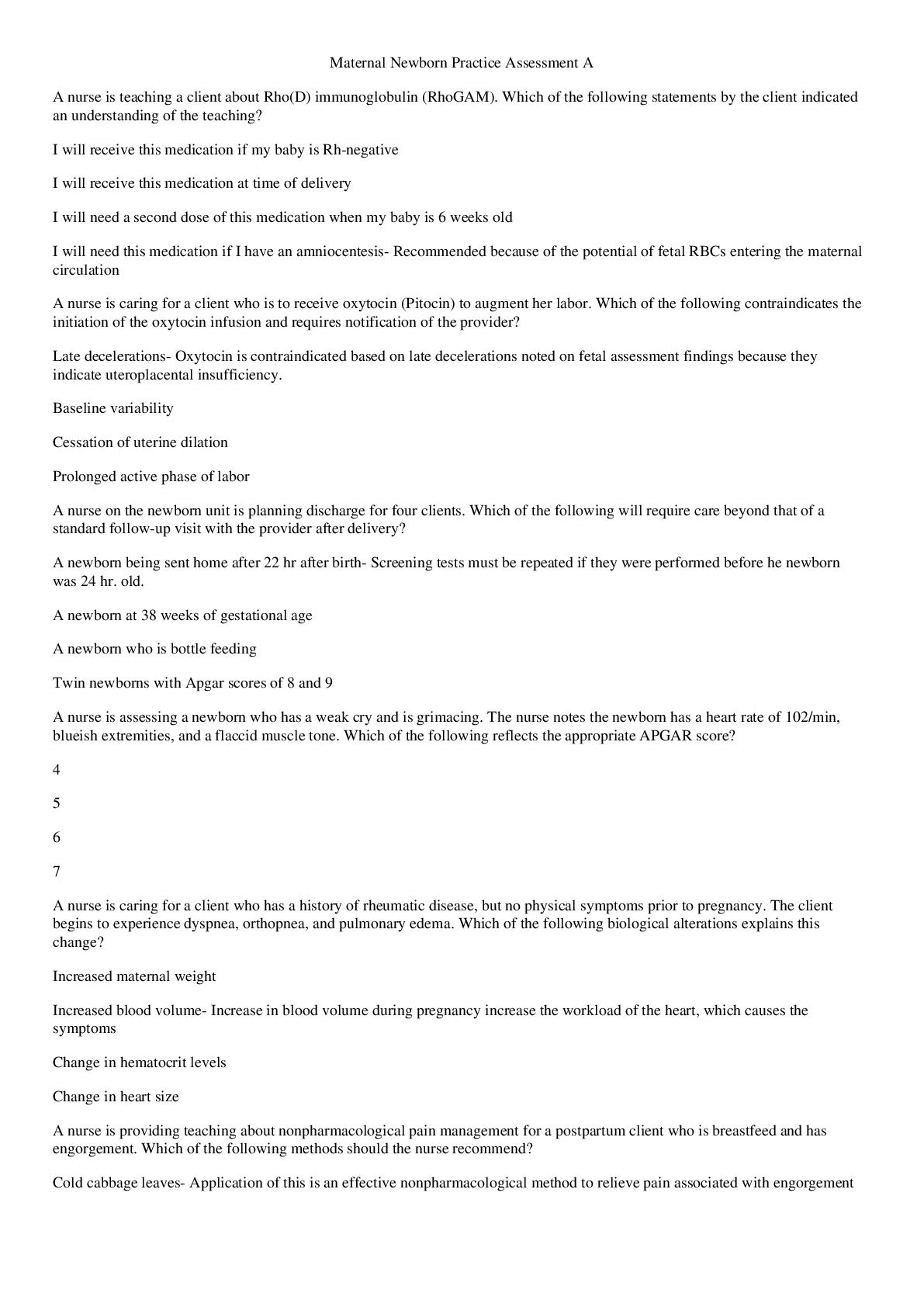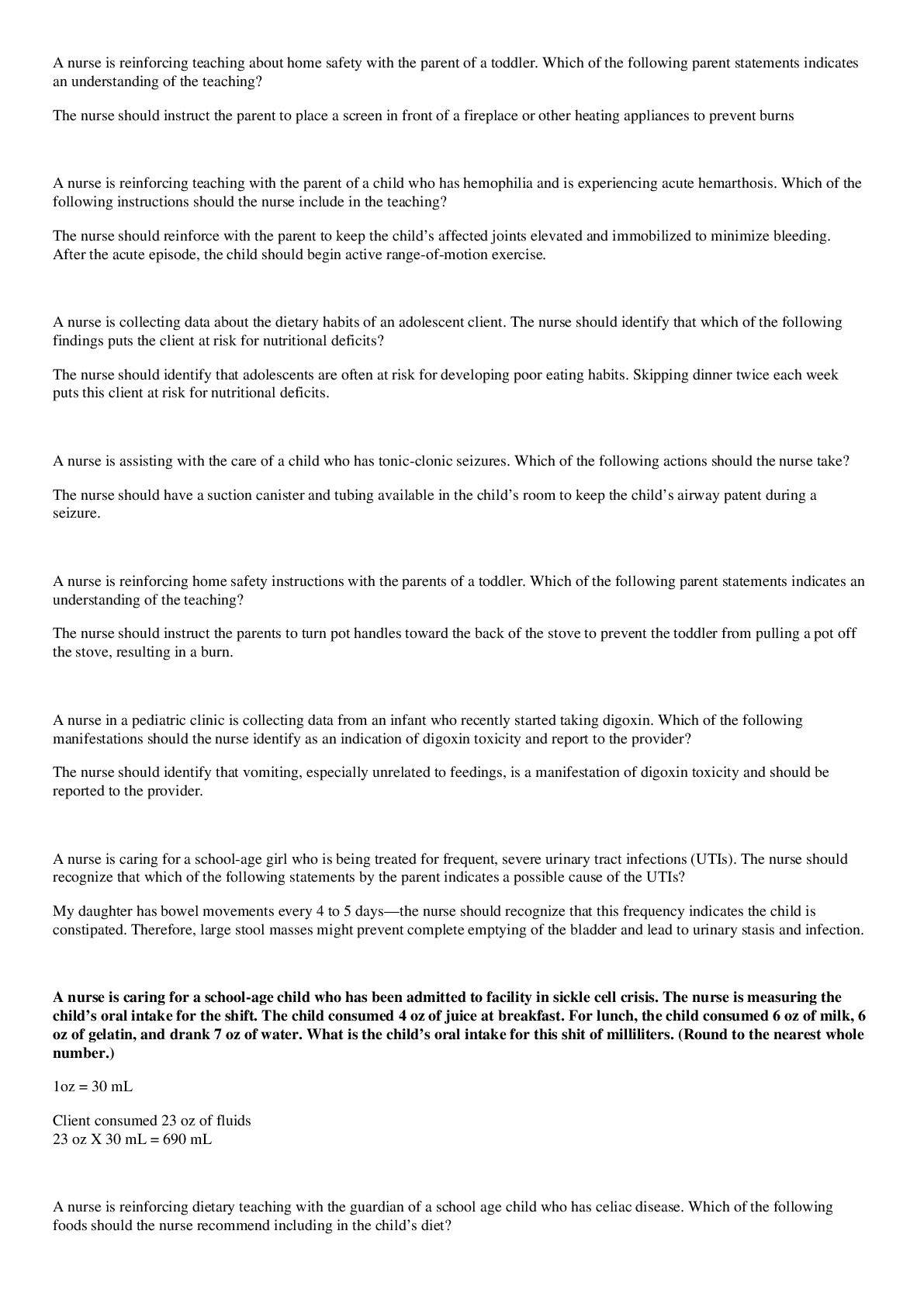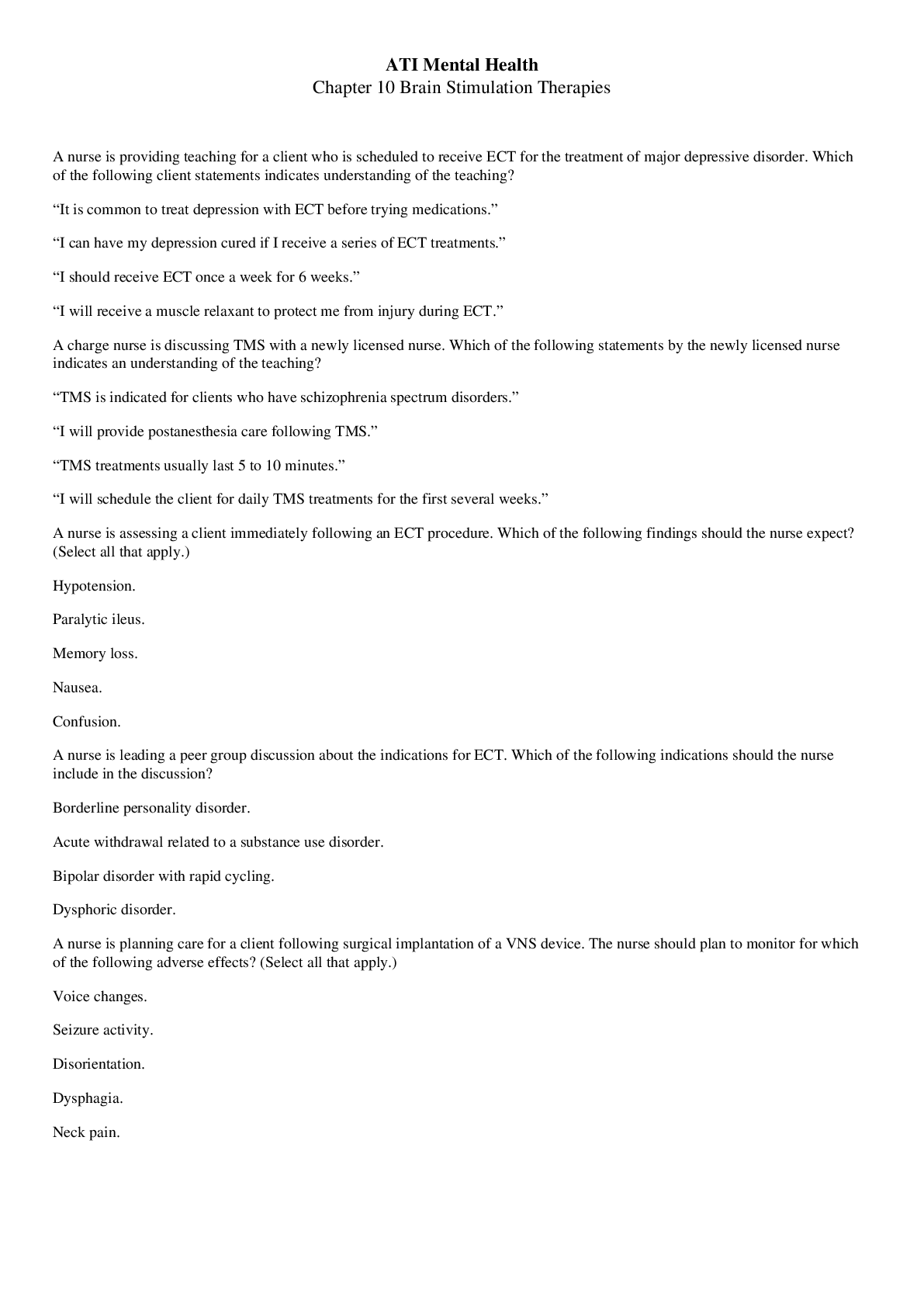*NURSING > STUDY GUIDE > ACCT 212 Week 8 Final Exam (Version 2): DeVry University/ DOWNLOAD TO SCORE AN A (All)
ACCT 212 Week 8 Final Exam (Version 2): DeVry University/ DOWNLOAD TO SCORE AN A
Document Content and Description Below
ACCT 212 Week 8 Final Exam (Version 2): DeVry University/ DOWNLOAD TO SCORE AN A Question: At the end of the period it is necessary to close all temporary accounts. (1) Explain why this process is ... required (15 points) and (2) provide an example of the closing of an expense account, Salary Expense in the form of a journal entry. (10 points)(Points : 25) Question: (TCO 2) In accounting it is necessary to understand which accounts have a debit balance and which accounts have a credit balance. (1) Name 2 accounts that have a normal debit balance (10 points). (2) Name 2 accounts that have a normal credit balance (10 points). (3) Give an example of a journal entry when a company purchases land for $5000 by paying cash using the debit/credit rules. (5 points)(Points : 25) Question: (TCO 4) Inventory valuation methods determine the cost of goods sold and the inventory balance. (1) Describe the difference between the LIFO, FIFO and average cost methods of accounting for inventory (15 points). (2) Give an example of the application of each method – LIFO, FIFO and Average Cost (10 points). (Points : 25) Question: (TCO 4) Inventory valuation methods determine the cost of goods sold and the inventory balance. (1) Explain how the Last in First out (LIFO) method is applied (15 points) and (2) provide an example of the impact that this method of inventory valuation will have on Gross Profit. (10 points)(Points : 25) Question: (TCO 1) The Balance Sheet is sometimes referred to as a snap-shot of the financial position of the business on a particular date. Name the three major components of the Balance Sheet (15 points) and provide an example of an account that would be found in each major component (10 points). (Points : 25) Page 2 Question: (TCO 6) BagODonuts Company bought a used delivery truck on January 1, 2010, for $19,200. The van was expected to remain in service 4 years (30,000 miles). BagODonuts’ accountant estimated that the truck’s residual value would be $2,400 at the end of its useful life. The truck traveled 8,000 miles the first year, 8,500 miles the second year, 5,500 miles the third year, and 8,000 miles in the fourth year. 1. Calculate depreciation expense for the truck for each year (2010-2013) using the: a. Straight-line method. b. Double-declining balance method. c. Units of Production method. (For units-of-production and double-declining balance, round to the nearest two decimals after each step of the calculation.) 2. Which method best tracks the wear and tear on the van? 3. Which method would BagODonuts prefer to use for income tax purposes? Explain in detail why BagODonuts prefers this method.(Points : 25) Question: (TCO 7) ABC Inc. was incorporated on 1/15/12. Their corporate charter authorized the following capital stock: Preferred Stock: 7%, par value $100 per share, 100,000 shares. Common Stock: $1 par value, 500,000 shares. The following transactions occurred during the year: 1/19/12 – Issued 100,000 shares of common stock for $17 cash per share. 1/31/12 – Issued 3,000 shares of preferred stock for $115 cash per share. 11/1/12 – Repurchased 30,000 shares of common stock for $22 cash per share. 12/1/12 – Declared and paid a total dividend of $95,000. Required: 1. Prepare the journal entry for each transaction listed above. 2. In your own words, explain the main differences between common and preferred stock. (Points : 25) Question: (TCO 5) Internal Control Procedures are in place to protect the assets of every business as mentioned in the textbook and our discussions. Of the seven internal control procedures, list five of these controls and describe how each procedure is implemented. (5 points each with 2 points for listing and 3 points for a description)(Points : 25) Question: (TCO 2) Below are the accounts of Super Pool Service, Inc. The accounts have normal balances on June 30, 2012. The accounts are listed in no particular order. Account Balance Common stock $5,100 Accounts payable $4,400 Service revenue $17,100 Land $28,800 Note payable $9,500 Cash $5,200 Dividends $6,100 Utilities expense $2,100 Accounts receivable $10,600 Delivery expense $700 Retained earnings $25,600 Salary expense $8,200 Prepare the company’s trial balance as of June 30, 2012, listing accounts in proper sequence, as illustrated in the chapter. For example, Accounts Receivable comes before Land. List the expense with the largest balance first, the expense with the next largest balance second, and so on. (Points : 25) 5. Question: (TCO 4) Linda’s Lampshades started business on Jan. 1, 2001. They had the following inventory transactions: Journals – Jan. 2001 Purchases Supplier Date Received Quantity Unit Cost Amount Donna 01/10/01 110 12.00 1320.00 Thomas 01/15/01 160 14.00 2240.00 Cindy 01/18/01 150 15.00 2250.00 Sales Customer Date shipped Quantity Sel. Price Amount Norilene 01/16/01 200 25.00 5000.00 1. Calculate the ending inventory, using the perpetual inventory method: A. Using FIFO B. Using LIFO Using Average Cost Prepare the following statement Using FIFO LIFO Average Cost Sales Cost of Sales Gross Profit (Points : 25) [Show More]
Last updated: 1 year ago
Preview 1 out of 0 pages
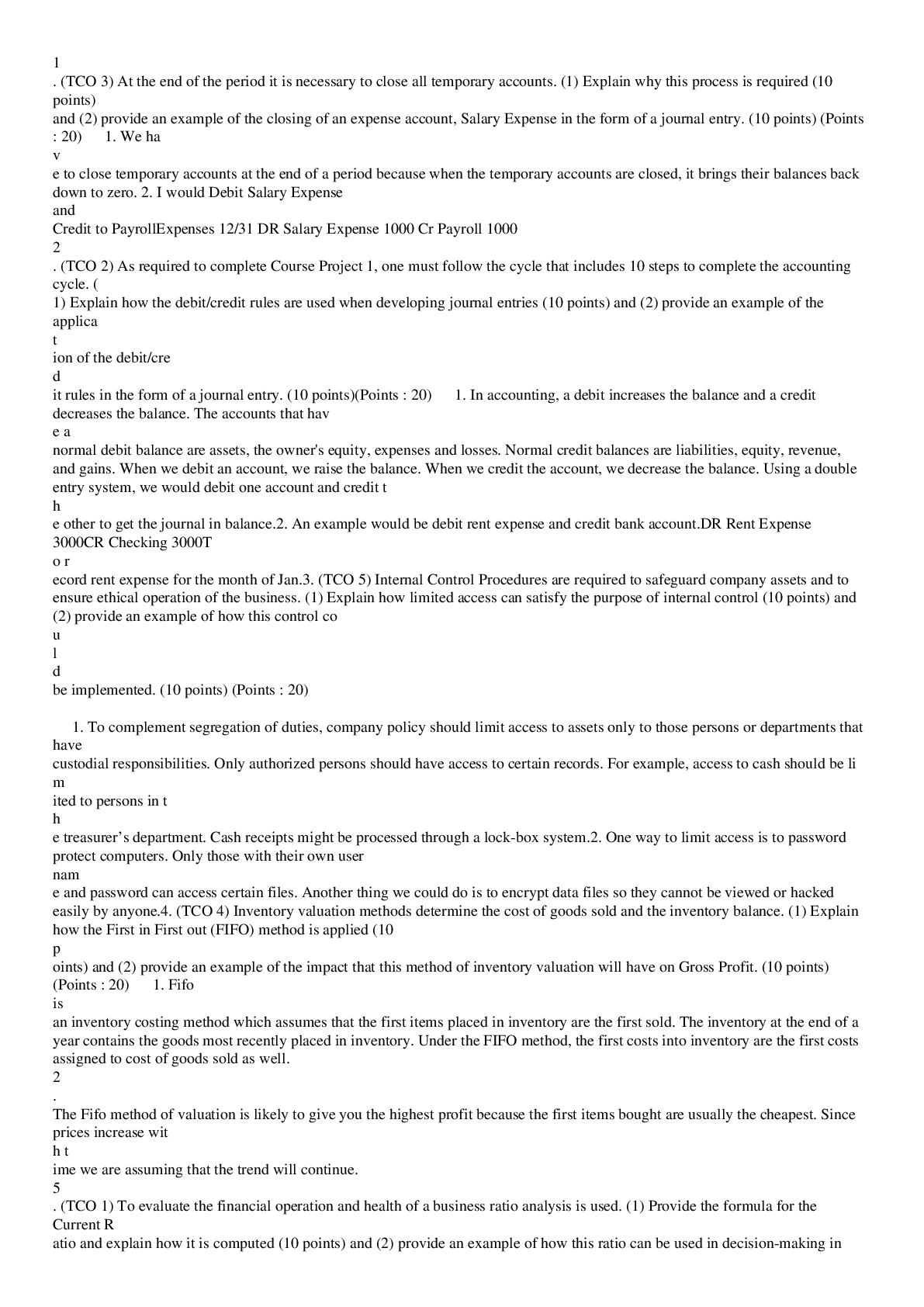
Reviews( 0 )
Document information
Connected school, study & course
About the document
Uploaded On
May 25, 2020
Number of pages
0
Written in
Additional information
This document has been written for:
Uploaded
May 25, 2020
Downloads
0
Views
39

